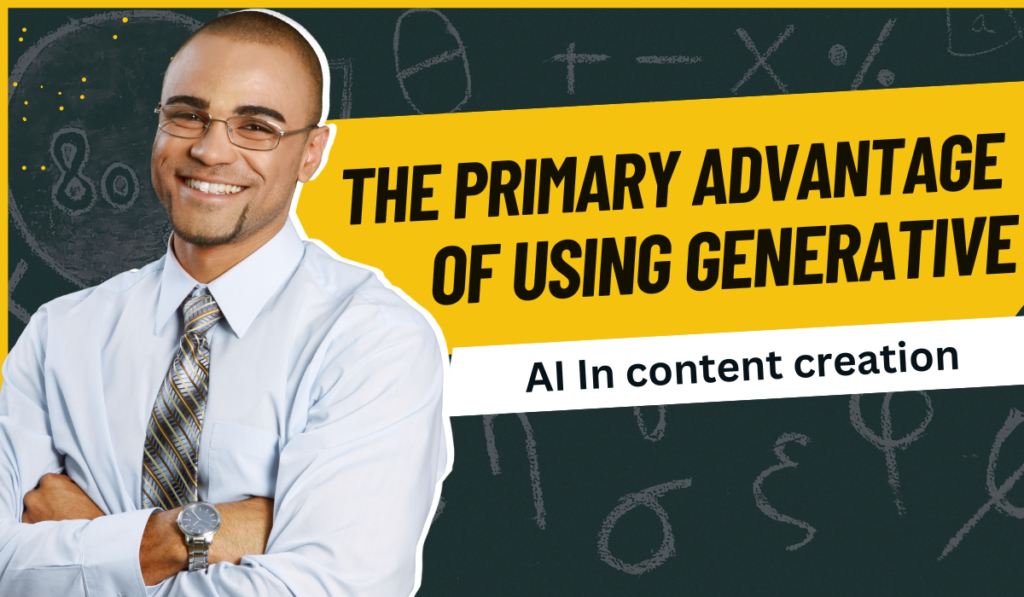Generative AI
What is Content Creation using AI?
In AI content production, textual and visual content—such as blog posts, social media updates, product descriptions, images, videos, and more—are produced using artificial intelligence. By learning from data, artificial intelligence (AI) systems may identify patterns in the data and use that knowledge to produce new materials that nearly mimic human work. These state-of-the-art technologies use natural language processing (NLP) and machine learning to understand context, structure, and style, resulting in logical and relevant content.
Also Read: Boost Your PPC Performance: How to Find Negative Keywords
Why Use AI for Content Creation
1. Efficiency and Speed:
AI generates content much faster than humans, making it ideal for meeting digital marketing demands. Businesses often require large volumes of content delivered quickly. AI tools can produce high-quality articles, blog posts, and social media updates in a fraction of the time it takes a human writer. This efficiency allows businesses to stay relevant and consistently engage their target audience.
2. Cost-Effectiveness:
Hiring expert writers, designers, and video editors can be costly. AI content creation tools offer a more affordable alternative. Once implemented, they provide a steady stream of content without the ongoing expenses associated with human labor.
3. Scalability:
AI enables businesses to scale their content production rapidly. Whether expanding your blog, populating an e-commerce site with product descriptions, or maintaining a busy social media schedule, AI can handle increased demand without compromising quality. This scalability is essential for growing organizations looking to enhance their online presence.
4. Consistency:
Maintaining a consistent voice and style across all content can be challenging, especially with multiple writers contributing. AI tools ensure uniformity by following preset guidelines and templates. This consistency strengthens the brand’s identity, making the content more recognizable and credible.
5. Personalization:
AI leverages user data analysis to deliver personalized content tailored to individual tastes and behaviors. This includes customized marketing messaging, personalized product suggestions, and targeted email campaigns designed for specific audience segments. This personalized approach enhances customer experience and significantly boosts user engagement.
6. Creative Assistance:
AI offers writers and designers with new ideas, drafts, and ideas for improvement to help them solve creative blocks. Content made together with AI is more imaginative and well-produced.
Among all of the advantages of AI content production are its accuracy, cost, scalability, consistency, modification, and creative support. Businesses can utilize AI to create visually appealing material that builds brand loyalty, engages viewers, and encourages growth. Creating content with the right balance of human knowledge and AI skills offers the best outcomes.
Types of Content You Can Create with AI
Artificial intelligence (AI) has revolutionized content creation, making it faster, more efficient, and often more compelling.
Data-Driven Insights:
- AI processes vast amounts of data to identify trends and optimize content strategies. This data-driven approach ensures content relevance and SEO optimization, enhancing visibility and engagement with your target audience.
Time-saving:
- AI automates repetitive tasks in content creation, such as writing product descriptions and scheduling social media posts. This frees up time for your team to focus on strategic planning and creative endeavors, increasing overall productivity.
Better ROI:
- By improving efficiency, reducing costs, and enhancing content quality, AI-driven content creation yields a higher return on investment (ROI). Consistent and compelling content attracts and retains customers, driving traffic and increasing sales.
Text Generation and Writing:
- Articles and Blog Posts: AI can generate informative articles and blog posts on specific topics based on provided keywords or prompts.
Product Descriptions:
- AI can create compelling product descriptions that are tailored to attract and inform potential customers.
News Reports:
- Automated systems can produce news updates and reports based on real-time data and events.
Content Aggregation:
- AI can aggregate content from multiple sources and present it coherently.
Summarization:
- AI can summarize lengthy texts or articles into concise summaries, ideal for quick information consumption.
How to Write a Blog Post Using AI
Choose the Right AI Writing Tool:
Begin by selecting the best AI writing platform for your needs. Options like OpenAI’s GPT models, Jarvis by Conversion.ai, and ShortlyAI offer unique features. Consider factors such as pricing, ease of use, and specific capabilities before making a decision.
Define Your Topic and Audience:
Before writing, clearly define your blog post topic and target audience. Identify the main concept you wish to convey and outline key points to cover. Understanding your audience’s interests and preferences helps tailor your content to resonate with them effectively.
Provide a Clear Prompt:
Once you’ve chosen an AI tool and outlined your topic and audience, provide a precise prompt. Include essential points and any specific instructions for the AI to follow. This ensures the content generated aligns with your objectives and criteria.
Set the Tone and Style:
Specify the desired tone and style for your blog post content. Whether it’s professional, conversational, technical, or humorous, guiding the AI in this aspect ensures the generated content reflects your brand voice and engages your audience effectively.
Generate the Content:
Input your prompt and desired style into the AI tool to create the initial draft of your blog post. Review the draft carefully, making necessary adjustments to enhance clarity and precision.
Optimize for SEO:
Finalize your blog post by optimizing it for search engines. Incorporate relevant keywords, headers, and meta tags to improve visibility and search engine rankings. Utilize SEO suggestions provided by AI tools to enhance content effectiveness.
Proofread and Edit:
Before publishing, thoroughly proofread the article for grammar, spelling, and punctuation errors. Human oversight ensures the content maintains quality and readability. Make necessary edits to enhance coherence and overall appeal.
Add pictures and Multimedia:
By including appropriate images in your blog post, such as photographs, videos, or infographics, you may pique the interest of your audience. Visual components enhance the user journey by dividing up text and giving users more context or data.
Publish and Promote:
As soon as you’re happy with your final draft, post your blog unit on your website or blogging platform. Promote it on social media platforms, newsletters sent by email, and various other forms of marketing to boost traffic and visibility. Monitor performance metrics and adjust when necessary to increase impression and engagement.

